Soundsee
Design for Machine Learning
Design for Machine Learning
At a glance...
• Identify the industry where SoundSee is able to make the most impact.
• Create a Most Awesome Product (MAP) to demonstrate the value SoundSee can bring.
• Formulate a roadmap for the market expansion of SoundSee.
My role
Conduct primary and secondary user research
Learn user needs with storyboards
Design and iterate wireframes
Conduct user testings with prototypes
Design high-fidelity MAP
Assist marketing research
Duration
Jan, 2020 - May, 2020
Alex Heyison, Designer
Aubrey Kalashian, Software Engineer
Emily Yang, Interaction Designer
Molly Mercer, Mechanic Engineer
Nick Shariat, MBA
Stephanie Wang, Interaction Designer
Our approach
1. Scoping
Decide on applying use cases to demonstrate the value of SoundSee after considering the goals of Bosch.
2. Research
Figure out the industry and the MAP that SoundSee can bring the most impact through market and user research.
3. MAP development
Create the high-fidelity prototype through multiple rounds of Design-Build-Test-Learn cycle.
4. Roadmapping
Develop the marketing roadmap for SoundSee with the Bowling pin roll-out strategy.
Understanding the Potential
How do you design for a product before it exists?
At the outset, this question seemed odd, but as we grew to understand more about Bosch, the machine learning landscape, and product development in large organizations, we began to understand the importance of foresight in product innovation.
For Bosch to invest in developing the tech, they needed both a design and business justification that it would be worth the effort.
Bosch had stumbled audio machine learning with a talent acquisition.
What is the potential, and how does Bosch fit in?
Exploratory Scoping
We were first presented with a technology, a sound algorithm and were tasked with scoping an application for it. After doing market research, we rapidly ideated on use cases where certain industries would make sense (e.g. mobility, industrial tech, security, healthcare).

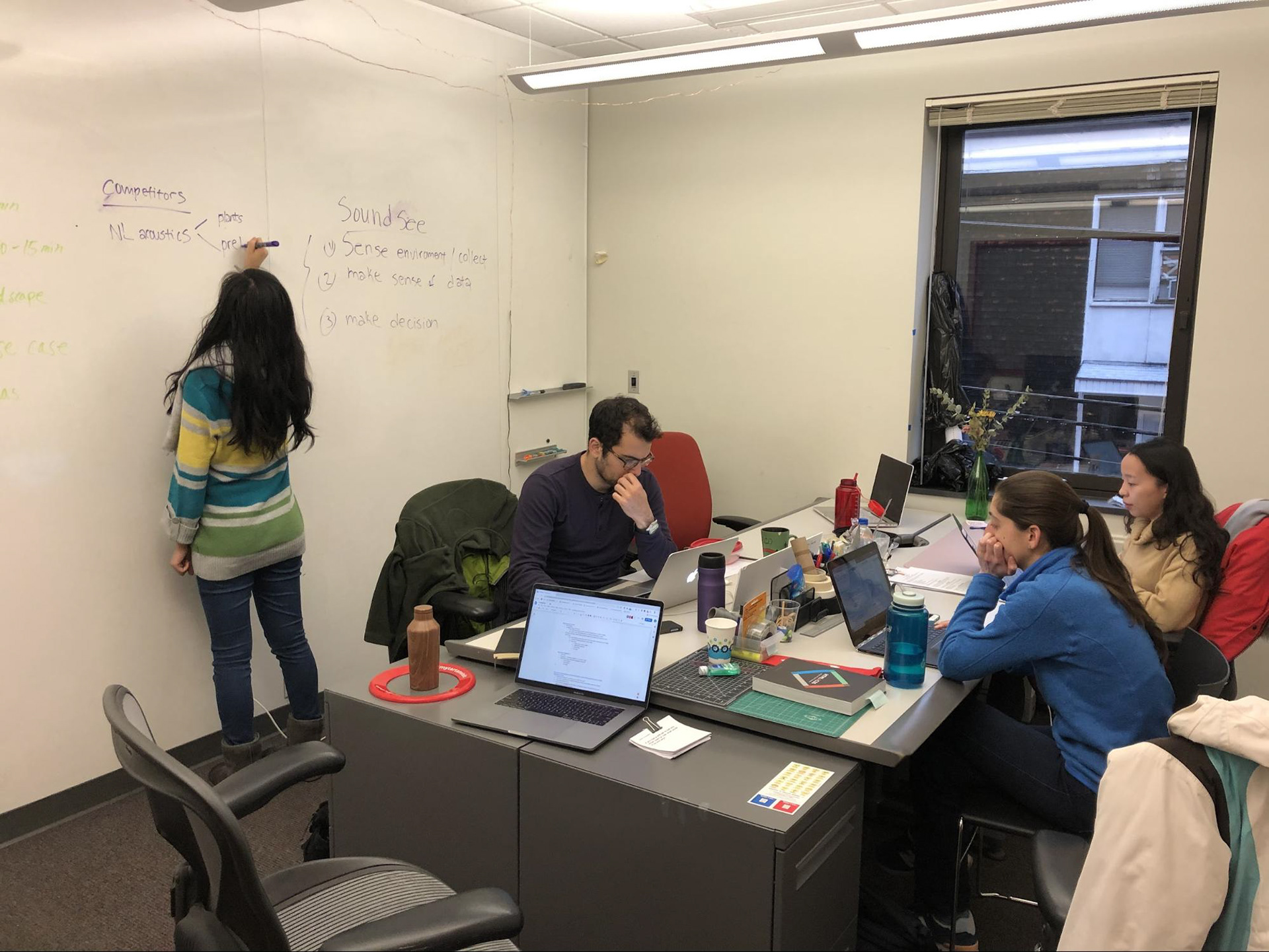
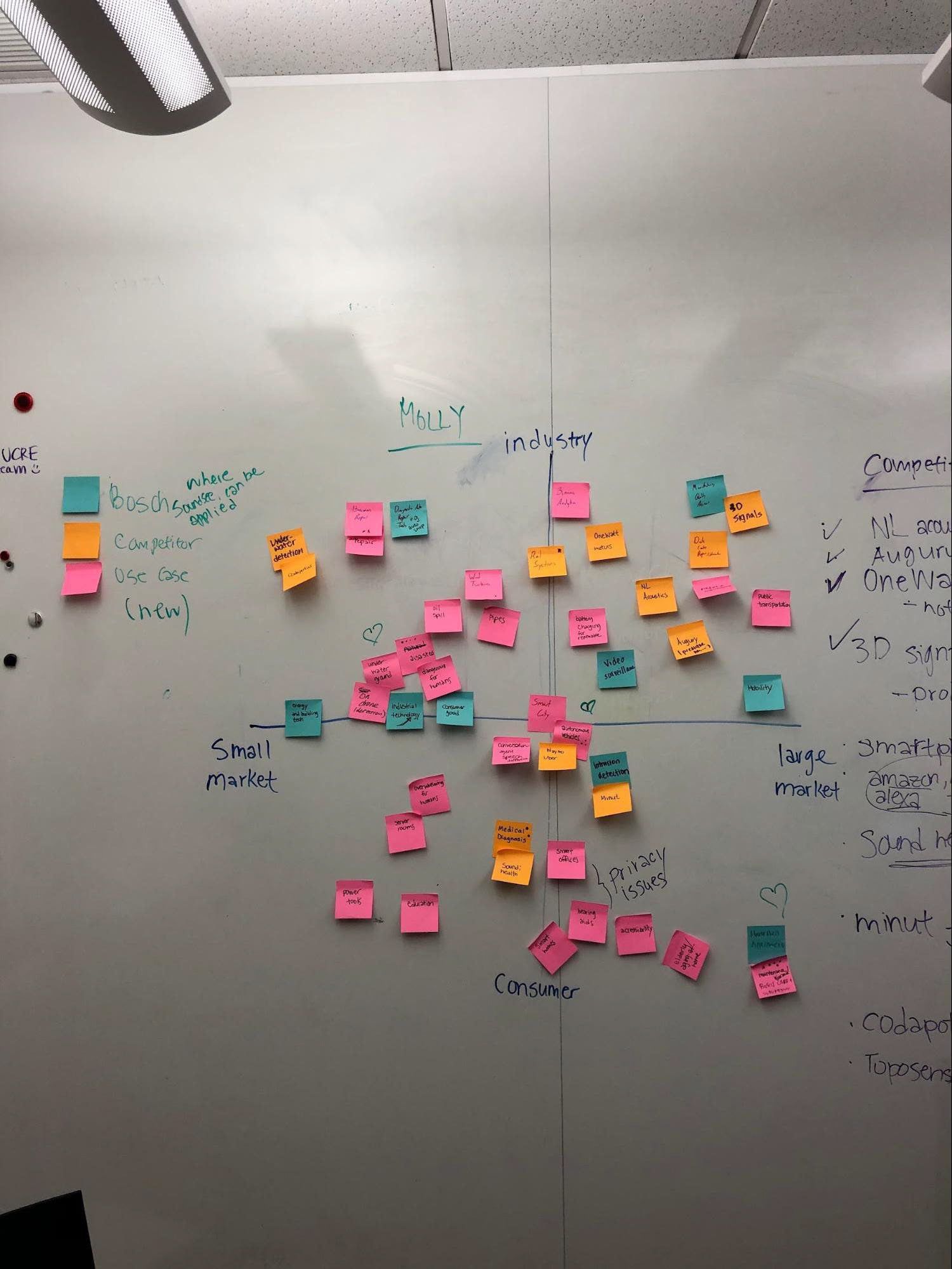
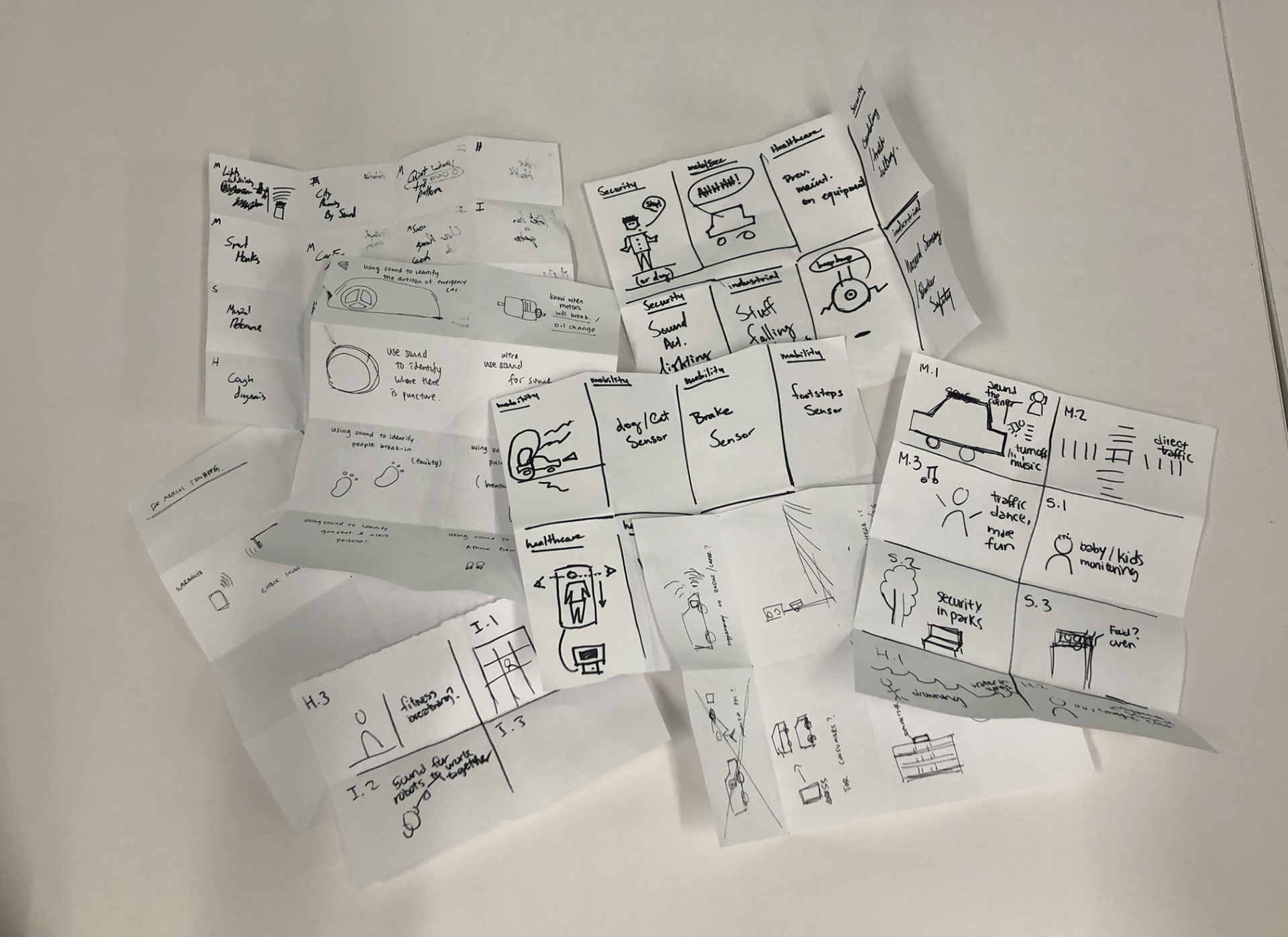
Storyboard Speed Dating
We created multiple storyboards for each industry based on our understanding of the competitive landscape and our client's goals. Then, we tested them with users from each area.
Healthcare got the most enthusiasm.
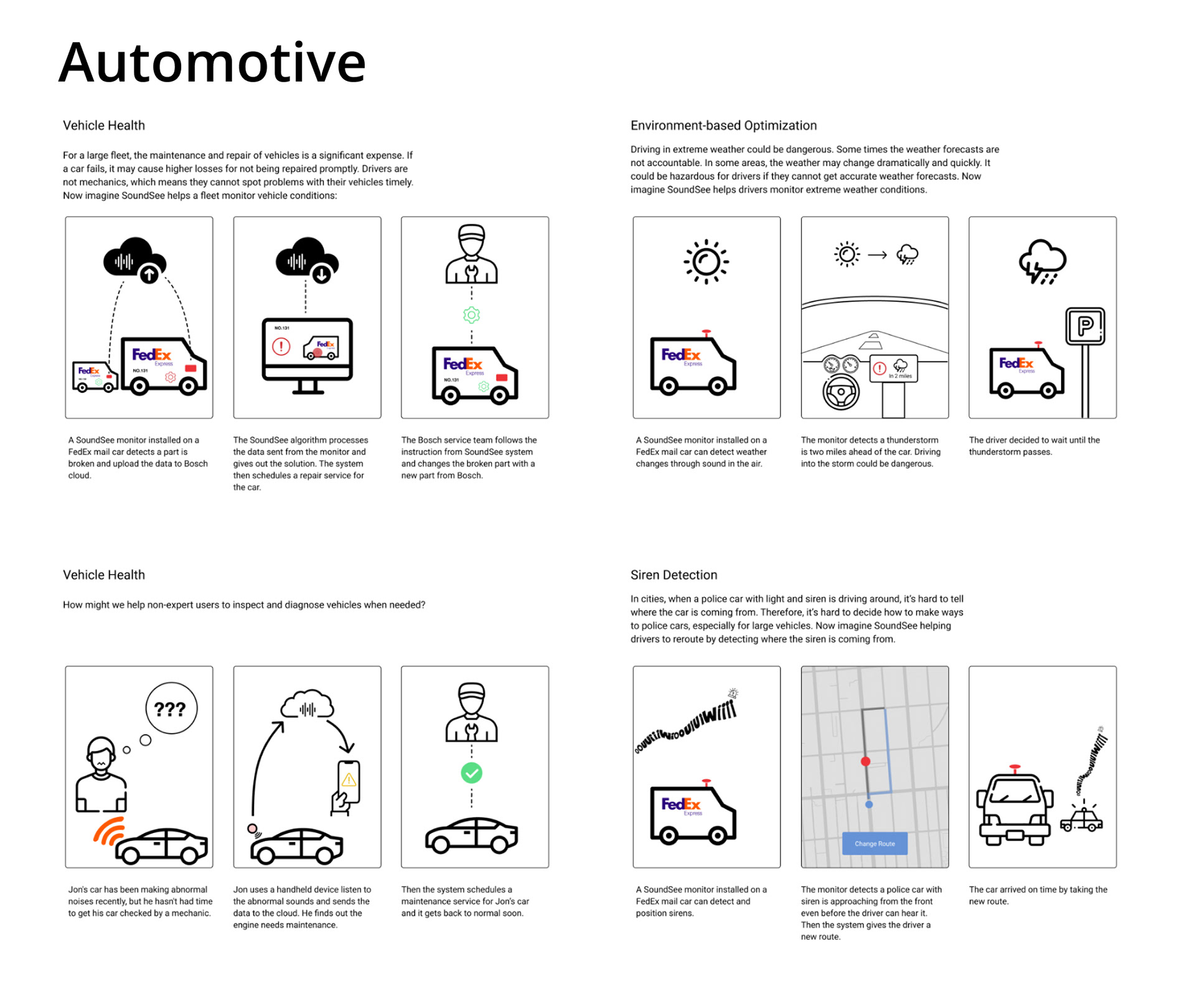
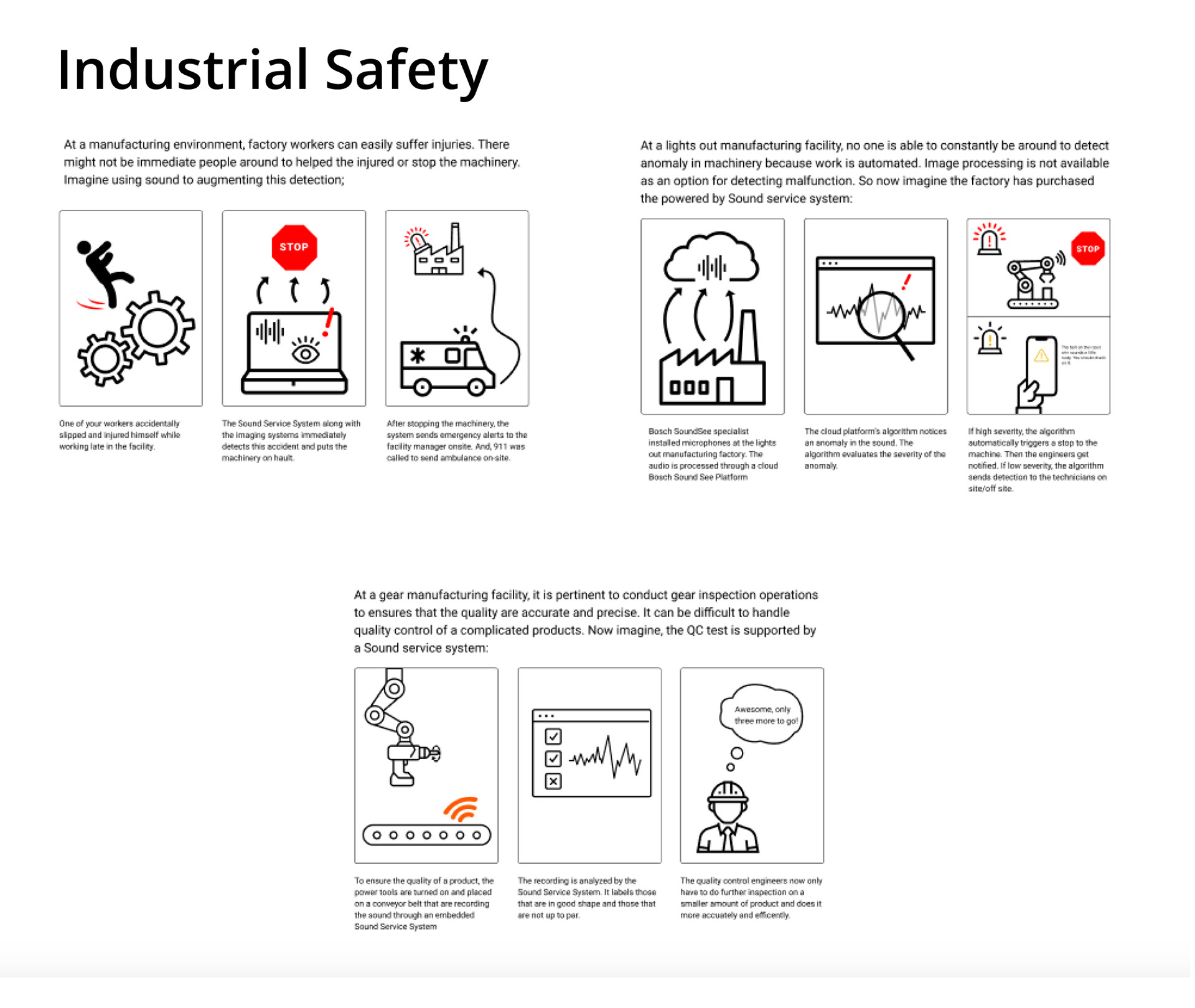
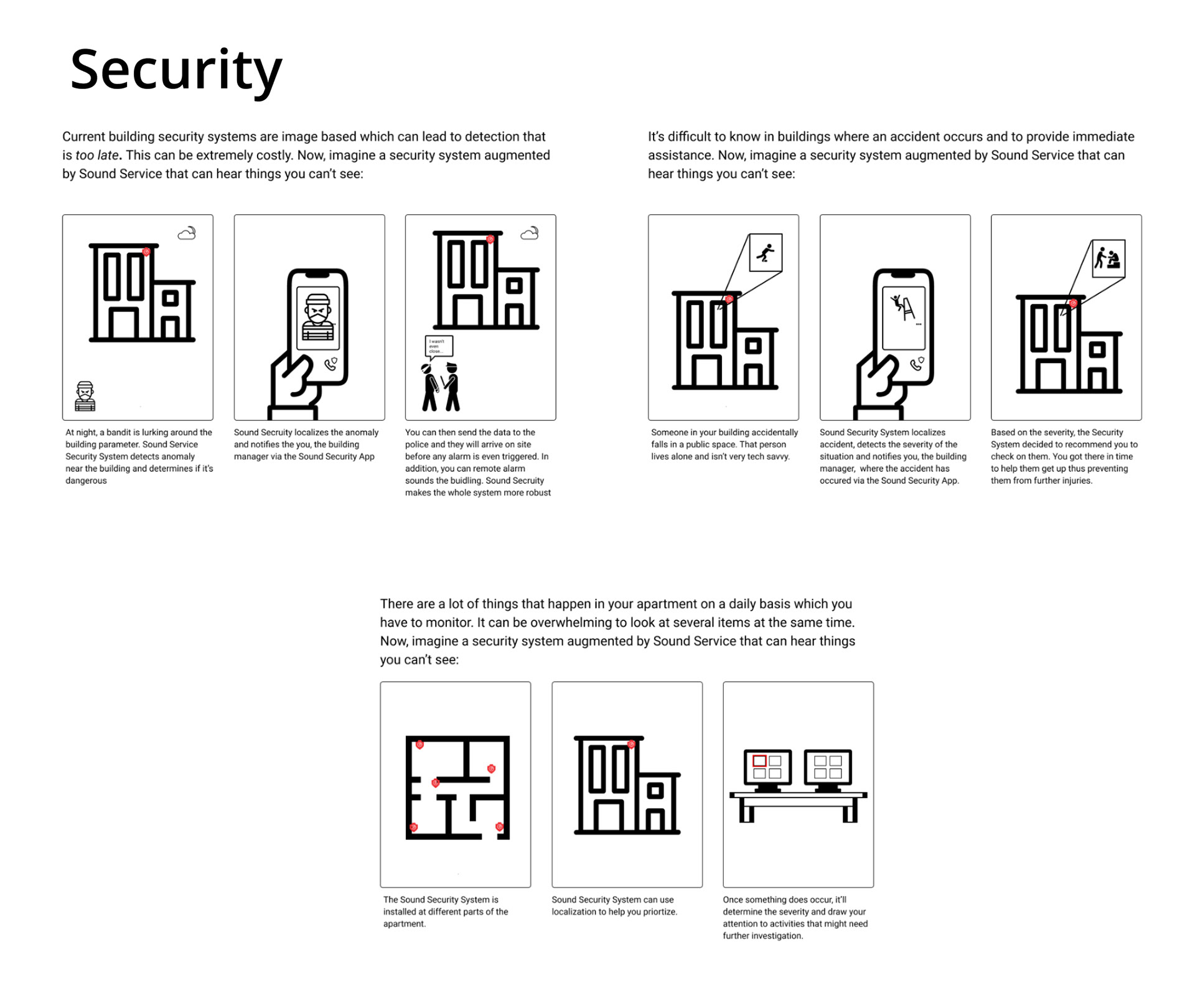
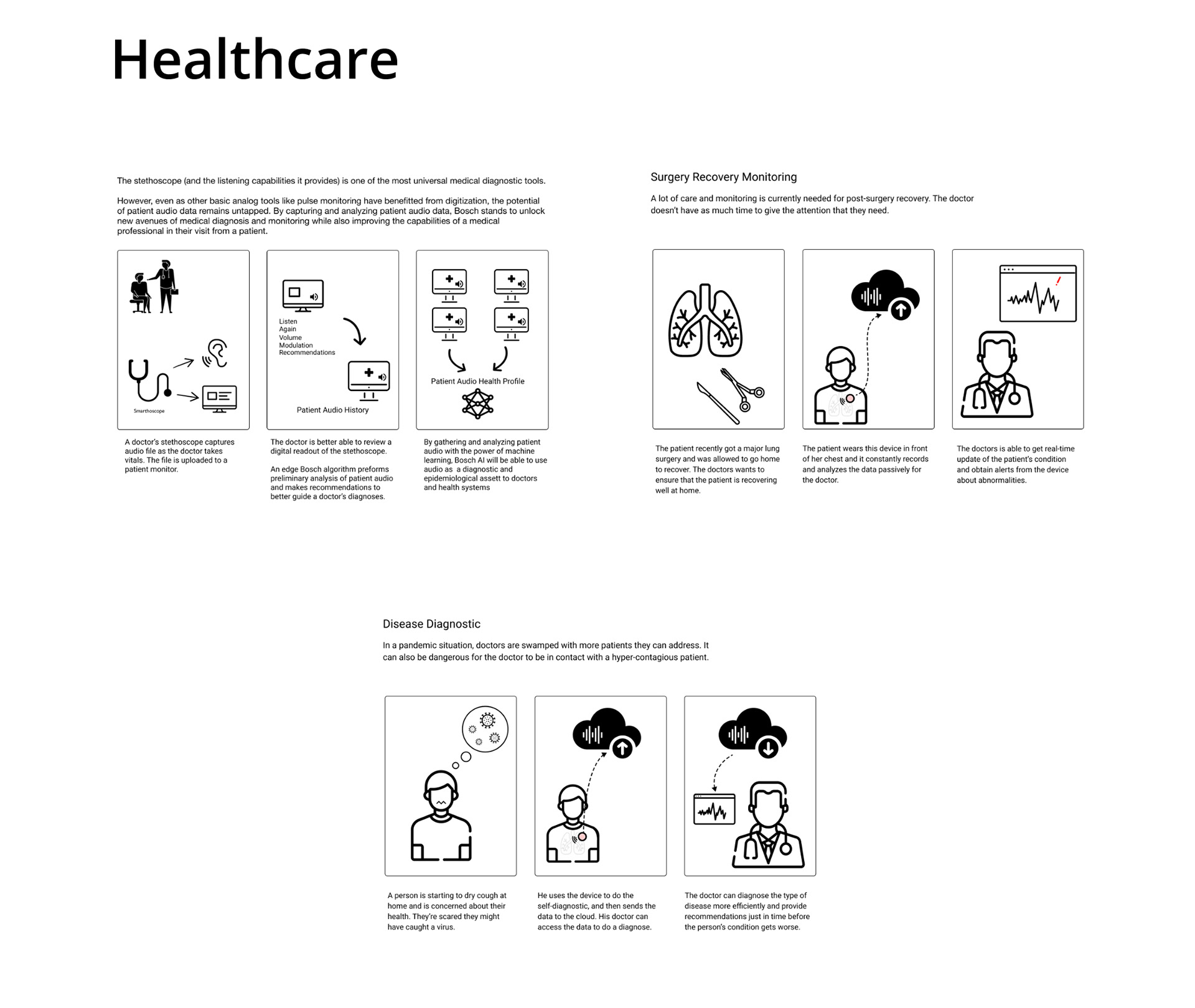
“If sound can pick up heart murmur, it can be very helpful – it’s very hard to hear, normally means faulty value and if can pick up on sooner the better"
- Physician’s Assistant
- Physician’s Assistant
A Business Case for Every Design
Sizing Markets
In collaboration with our business partners, our team began to sort through the TAM (Total Addressable Market), SAM (Serviceable Addressable Market, and SOM (Serviceable Obtainable Market) for our concept ideas.
By taking this step once we had coalesced on specific product concepts, we ensured that we would make a final prototype with both business and design value.
Narrowing our Scope
mid-Fi Prototype Testing
Assumption 1
It can be difficult for some doctors to identify patient abnormality using their current stethoscope.
Assumption 2
There is clear distinction between the sound of the heart & lung & that it would be beneficial to be able to differentiate both sounds.
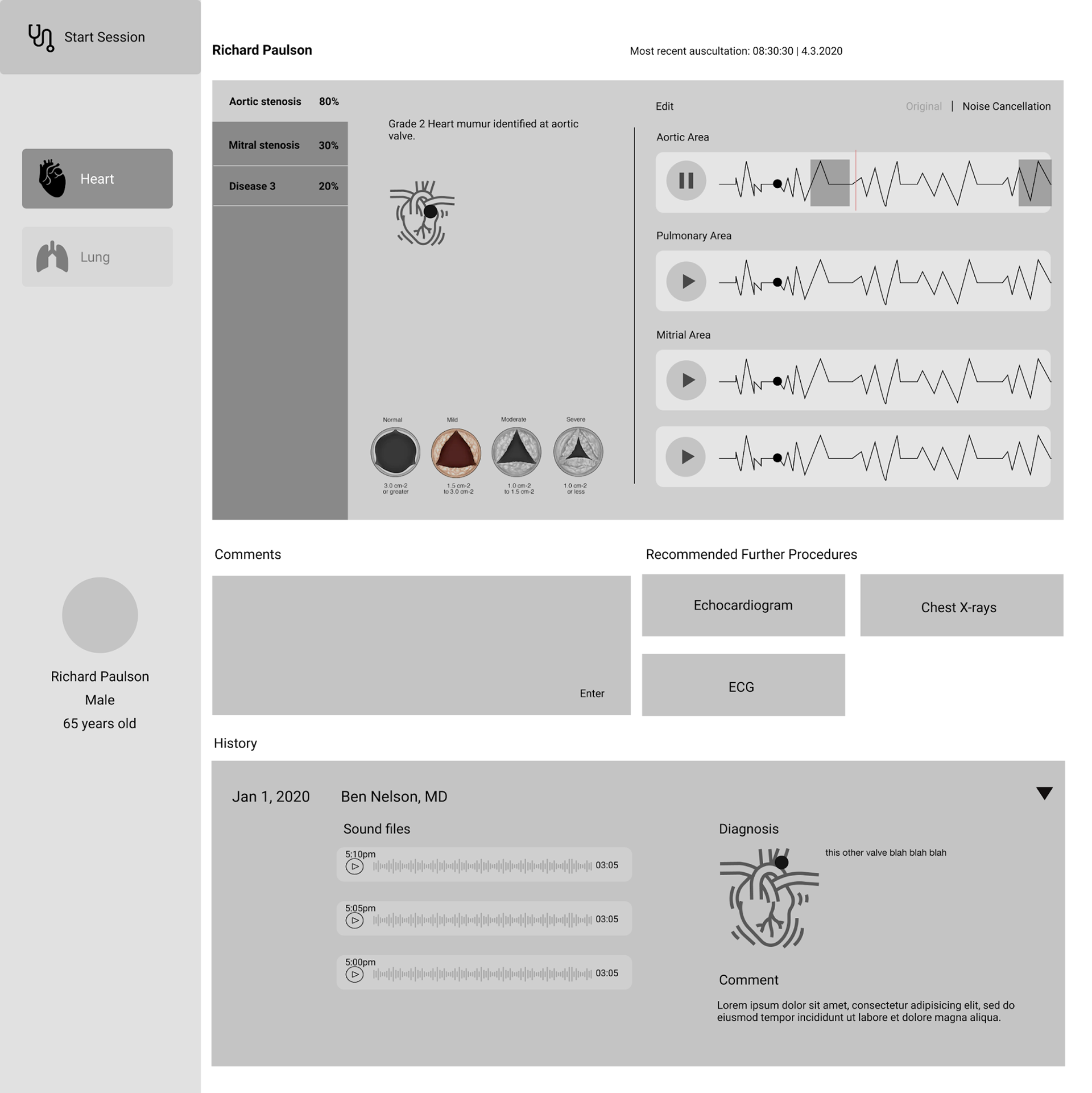
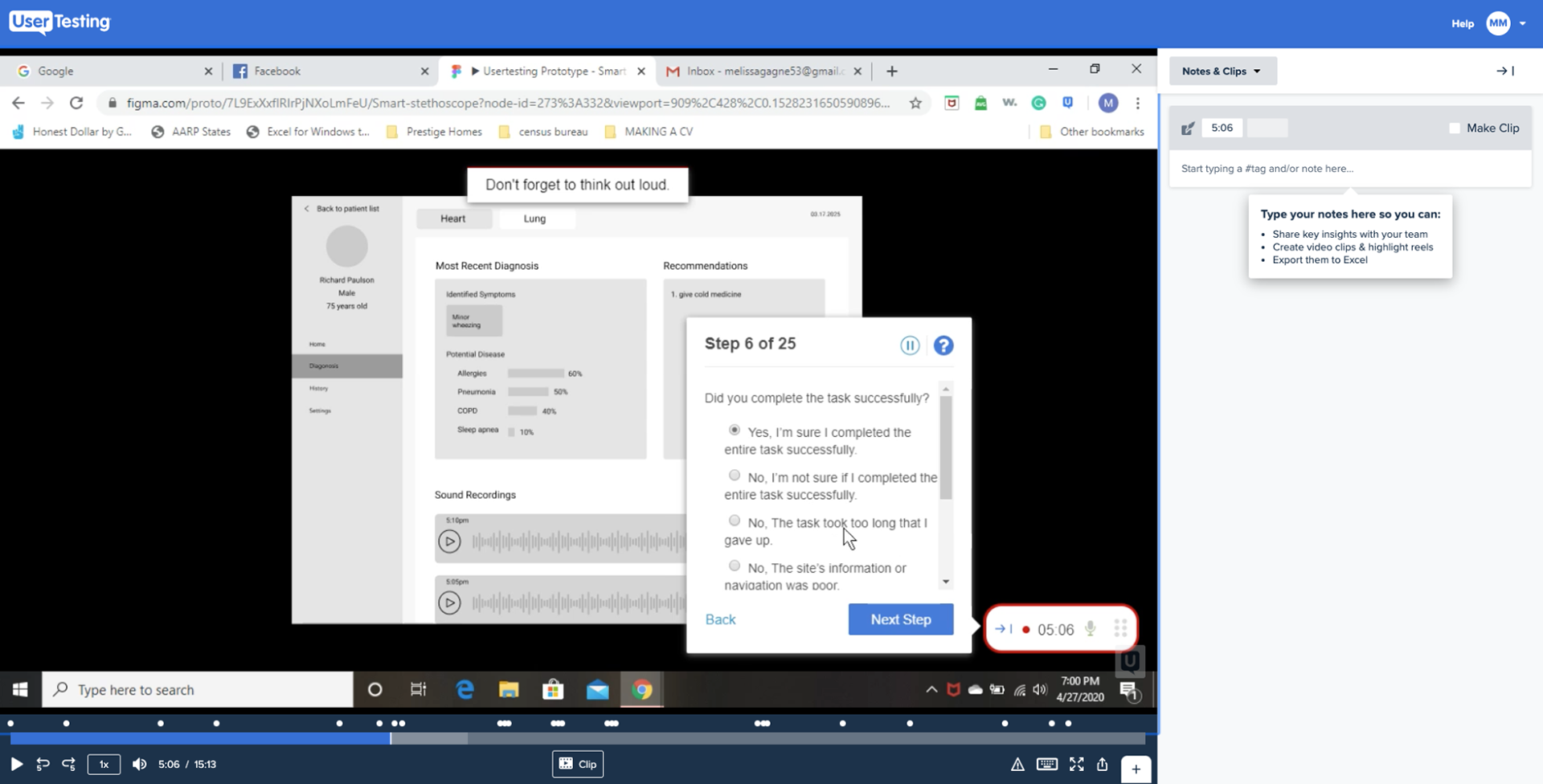
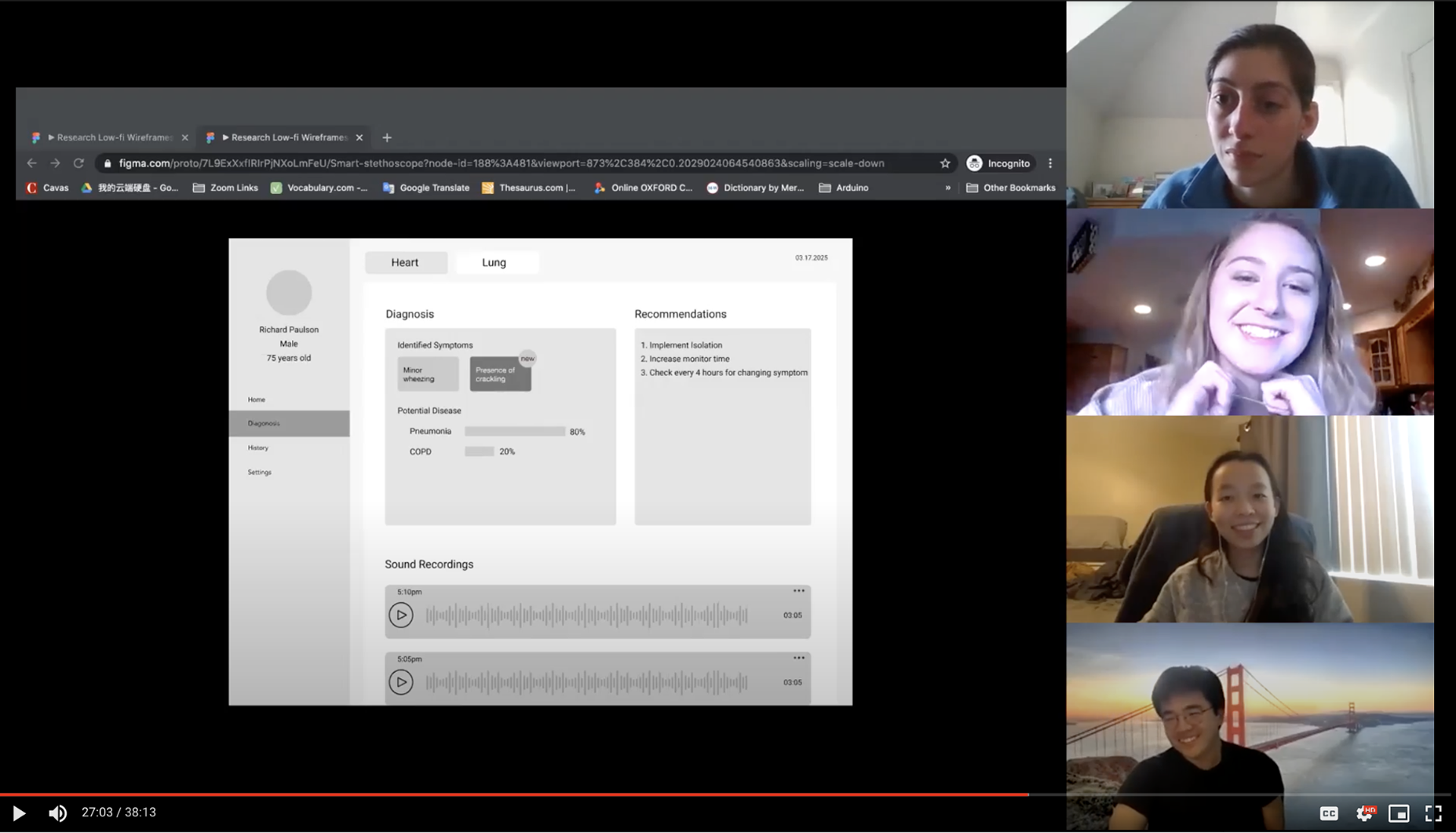
Insight 1
Medical professionals find value in reassurance of diagnosis or for double checking.
“Helpful for people who are not as confident, especially for those that would want to continue to improve”
- Physician's Assistant
- Physician's Assistant
Insight 2
Doctors don't visit nursing homes frequently. Staff often have to make daily assessment decisions and are responsible for noticing changes in presentation.
Insight 3
It's difficult to identify early symptoms of pneumonia in nursing homes
“If you listen to multiple patients a day and then a month later you need to know if something has gotten better/worse, history would be really helpful”
- Physician's Assistant
- Physician's Assistant
Revised Storyboard
HiFi Prototype



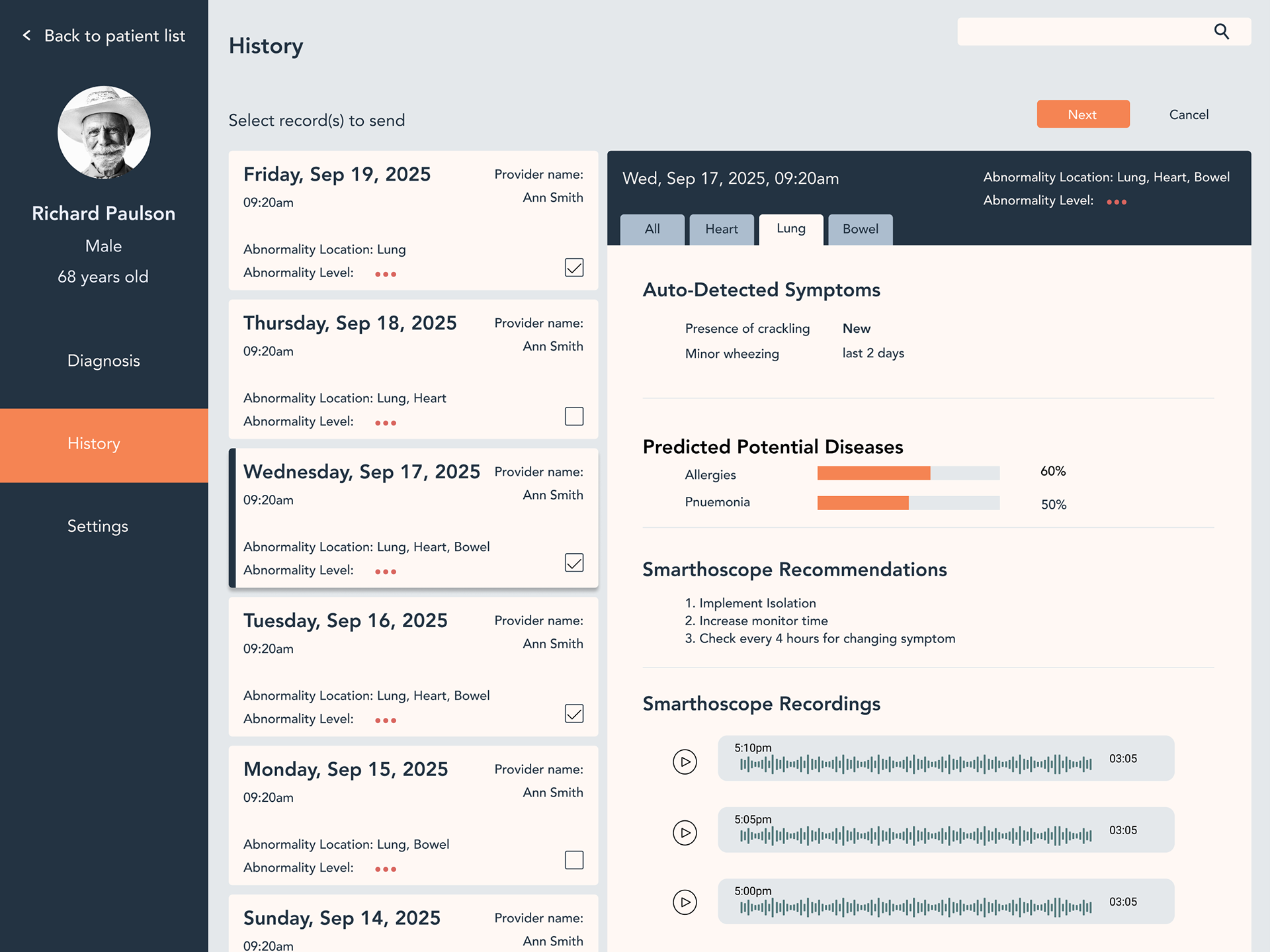
A design that scales
The Bowling Pin Model
Thinking strategically about this product direction, our team adapted Geoffery Moore's Bowling Pin Strategy to help visually communicate...
1. A feasible market entry point with demonstrated pain point and market size
2. Adjacent market segments we would be able to continue to develop our product scope.
3. Large scale organizational impact attached to a key Bosch business priority
Entry Point | Elder Care Pneumonia
3-5x
Cost of healthcare for seniors over non seniors
$605B
In Medicare spending by the federal government in 2018
$9.5 Billion
Spent on pneumonia in 2013
New Application | Cardiac Screening
As our smart stethoscope audio algorithm improves, we can begin to leverage our accumulated data to address other prominent diseases which rely on auditory auscultation to diagnose and monitor
#1
Cause of death in older adults is Heart Disease
47.3 Million
American adults over 60 have cardiovascular disease
New Segment | At-Home Screening
In tandem with continuing development of technology, we also can see growth potential that is design-led when it comes to usage outside the nursing home.
Telehome Care in particular is experiencing explosive growth with a potential overall market value of $175 Bn by 2026
Future State | Bosch Healthy Home
Problem to be solved:
Many at-home devices require active engagement with users to track their health, and don’t track symptoms that may have diagnostic power.
Current State:
Wearables are the most common passive monitors but their adoption is not widespread and their support is fragmented.
Ecosystem:
Fragmented across many different competitor types - smart home companies, med device manufacturers, payers, startups
